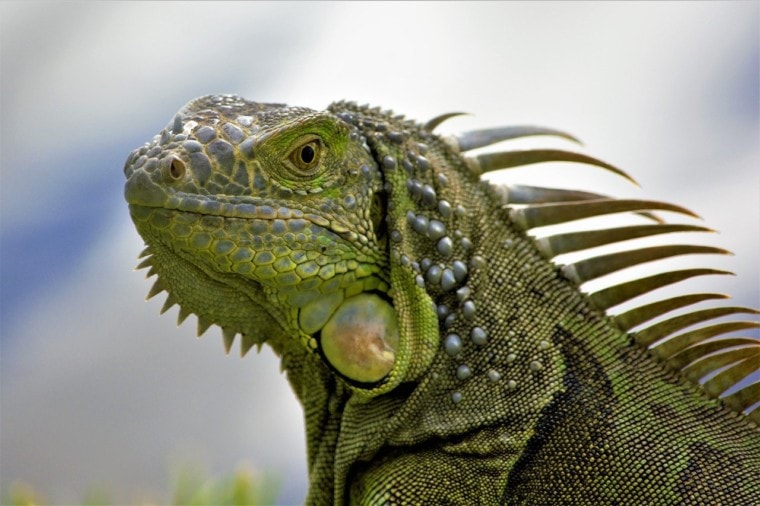
The Green Iguana is a large and colorful reptile that can look quite majestic in any home. However, before you set out to purchase one, there are several things you need to consider, including cage size, habitat, diet, and more. It’s also a good idea to know if they like when you handle them, so keep reading while we take a close look at the Green Iguana to answer all of these questions and more.
Quick Facts About The Green Iguana
| Species Name: | I. iguana |
| Family: | Iguanidae |
| Care Level: | Expert |
| Temperature: | 85 – 95 degrees |
| Temperament: | Docile but can be very territorial |
| Color Form: | Green, yellow, blue-grey |
| Lifespan: | 20 years |
| Size: | 4 – 6 feet |
| Diet: | Herbivore |
| Minimum Tank Size: | 6‘ x 4’ x 6’ |
| Tank Set-Up: | Screen, Lights, climbing surfaces |
| Compatibility: | Solitude |
Green Iguana Overview
The Green Iguana is a large reptile that can grow as large as 6 feet long and weigh more than 25 pounds. You can find it in a range of colors despite its name, and it enjoys basking in the sunlight from high in a tree or nesting in an underground burrow. You can find it almost anywhere in Central America and northern South America. Many places in the United States list it as an invasive species, including Florida, Texas, and Hawaii, so you will need to check with local laws if you live in these areas to see if the sale is prohibited.
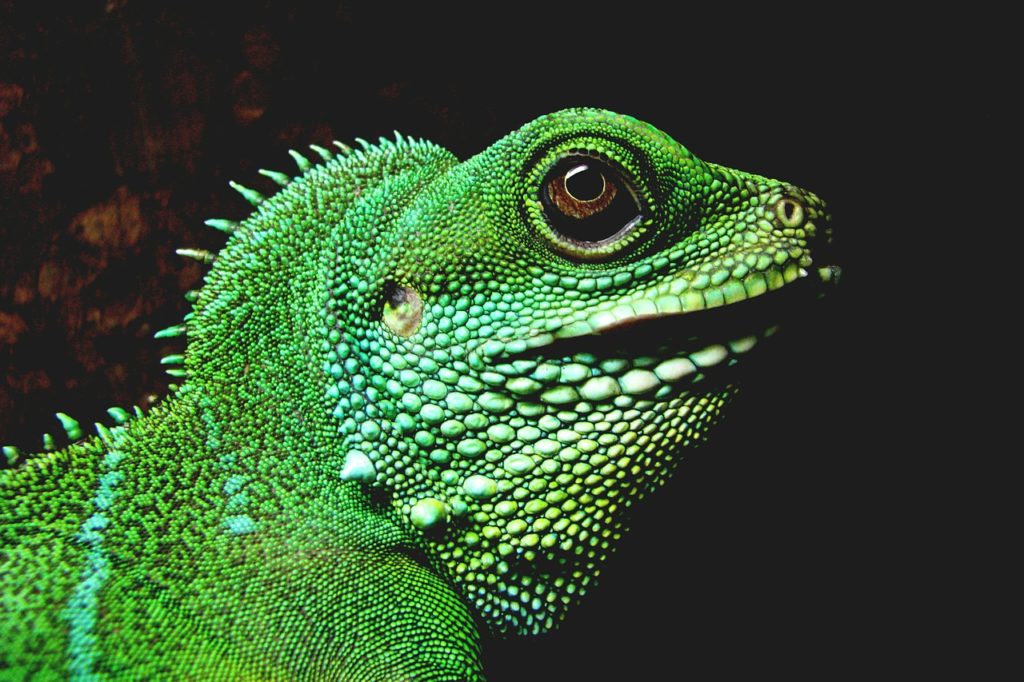
How Much Do Green Iguanas Cost?
Breeders across the United States successfully captive breed Green Iguanas, so you can usually find them at a reasonable price. We recommend setting aside $15 – $30 for your new pet, depending on where you live and how large the breeding is. Large companies breed large numbers at a time, so the cost is lower, and their selection is usually larger.
Unfortunately, the price of the iguana itself is only a small part of the overall cost associated with owning one. The Green Iguana requires a large habitat that can be costly if you don’t build it yourself, and it will likely require numerous heat lamps to increase the temperature of the cage running every day, which can significantly increase your monthly electric costs.
Typical Behavior & Temperament
The Green Iguana is an herbivore that spends most of its time in trees or underground burrows. As an adult, it’s a solitary and territorial animal, so we don’t recommend keeping more than one unless you are breeding. It prefers to flee when threatened but will whip its tail and scratch when cornered. Birds of prey like the hawk feed on the Green Iguana, so it has developed the instinct to stop and remain motionless when hearing the bird call. Owners can mimic this sound to make their Iguana stop in its tracks when trying to catch it.
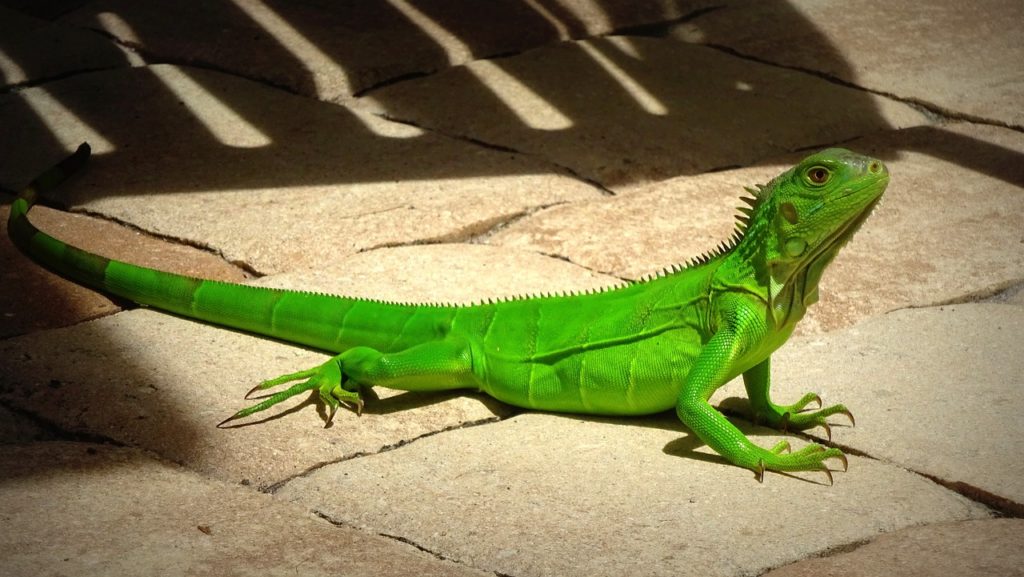
Appearance & Varieties
The Green Iguana can be in several colors, including yellow, orange, green, and blue-grey. There are even albino Green Iguanas in existence. It’s one of the largest kinds of iguana, and it typically grows more than 5 feet long. The female is usually a little smaller with less pronounced scales and jowls. It has sharp teeth for shredding leaves but can cause a nasty wound to a human. It also has a white photo sensor on its head that many experts call its third eye that it uses to see ultraviolet light, which helps it get the UVB light it needs to survive.
How to Take Care of Green Iguanas
Habitat, Tank Conditions & Setup
Cage Size
The most difficult part of raising a Green Iguana is creating a suitable environment that they can live in. You will need a screen cage at least 6‘ L x 4’ D x 6’ W. Ideally, the cage will be twice as long as its body, so a cage 12 feet long is ideal. Green Iguanas love to climb trees and can get quite high, hence the required cage height.
Lighting
You will also need to keep the cool areas of the cage between 85 and 95 degrees Fahrenheit with a basking area around 115 degrees so it can relax and collect the UVB light. The heat lamps you use will need to supply UVB light, and you will need to change them frequently since most bulbs stop creating UVB light long before they burn out.
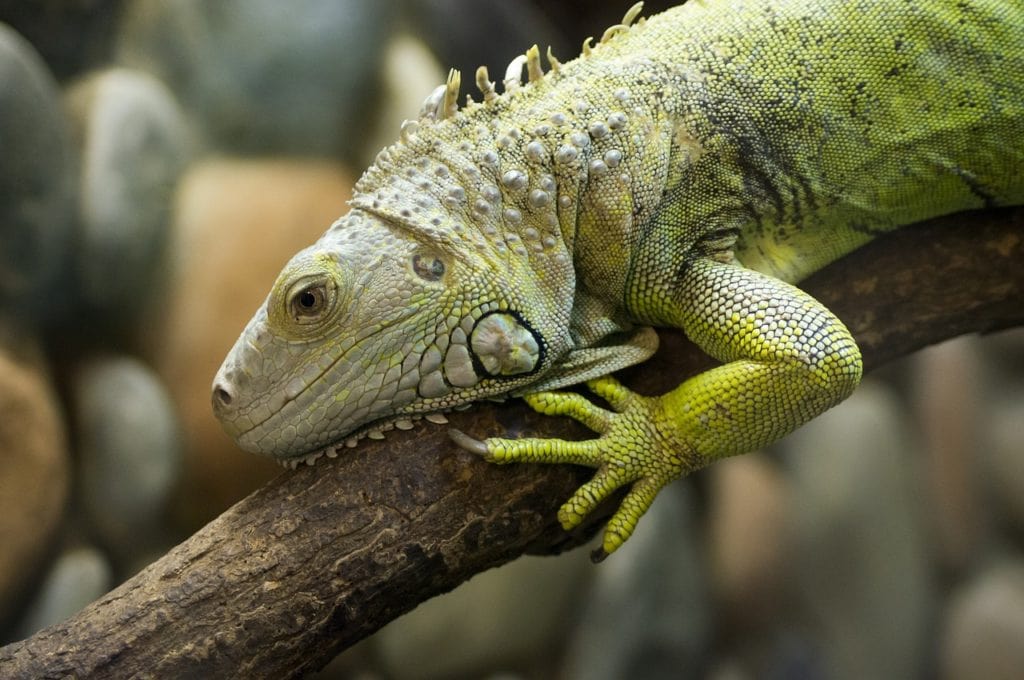
Climbing Surfaces
Your Green Iguana will also require plenty of tree branches to climb on and larger logs and rocks to make a home. The more branches, the better, and you don’t need to worry about your pet falling because Green Iguanas can fall dozens of feet without being injured.
Do Green Iguanas Get Along with Other Pets?
Green Iguanas are extremely territorial as adults. It can get quite dangerous with its sharp claws and lashing tail, so we don’t recommend putting other animals in its habitat. If you are breeding, you will need two habitats and only put them together during mating season.
What to Feed Your Green Iguana
Your Green Iguana will eat mostly leafy greens from any number of plants each day. You can also provide them with vegetables and flowers to a lesser extent. Most experts recommend 60% leafy greens—40% vegetables and flowers. It gets most of its water from its food and will rarely drink from a water source, so you won’t need to worry about a water bowl or fountain.
The biggest concern with the Green Iguana diet is that if the calcium and phosphorus levels aren’t correct it can lead to serious health problems for your pet. The food must have a 2:1 ratio of calcium to phosphorus to be safe, so always look up the nutritional information of any food before giving it to your Green Iguana.
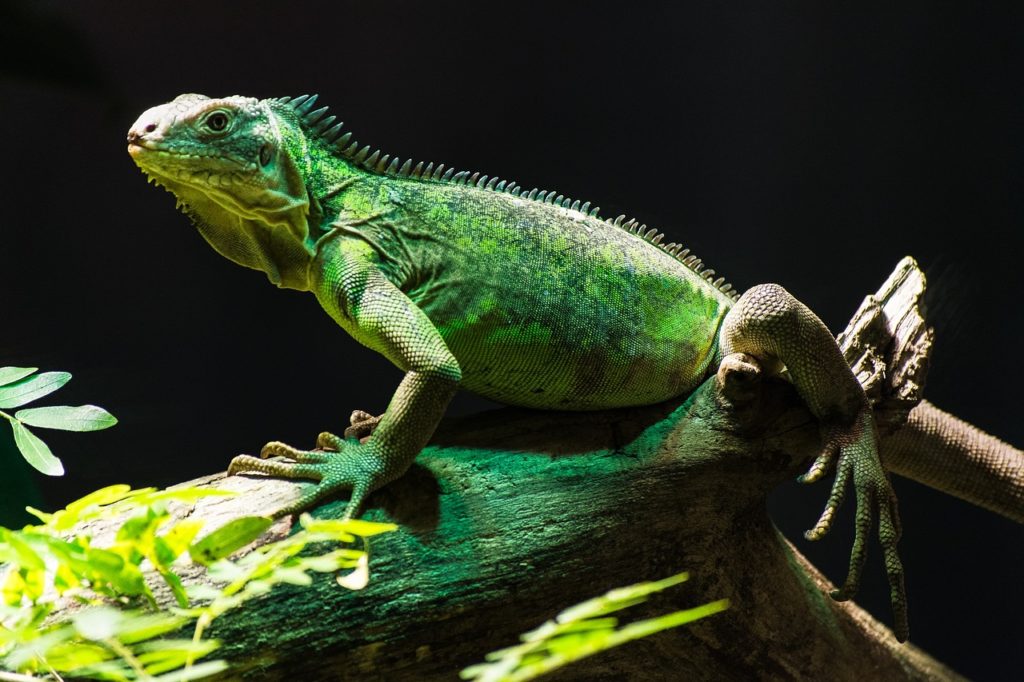
Keeping Your Green Iguana Healthy
As long as you provide your pet with an adequate habitat and a diet with the correct calcium-to-phosphorus ratio, your pet should remain healthy and live a long life without many trips to the vet. It’s quite calm and enjoys basking in the sun and chewing leaves.
Breeding
The males will excrete a scent that attracts the females during mating season. Once mating is complete, the female will lay 20–70 eggs in a burrow that she digs. The female will not protect the eggs, but once they hatch 10–15 weeks later, the group will stay together as a family for about one year, during which time the males will protect the females and are the only species of reptile known to do so.
Are Green Iguanas Suitable for You?
Green Iguanas can make an excellent pet for someone with a lot of experience and a large budget, but it can be challenging to create such a large habitat and keep it at the correct temperature for 20 years or more, so you will need to give it considerable consideration before you make any purchases. If you can provide the habitat, Green Iguanas make fantastic pets that are calm, colorful, and fun to watch.
We hope you have enjoyed reading over our look at this South American lizard and learned some new and interesting facts. If we have helped you learn more about this large reptile, please share this guide to the Green Iguana on Facebook and Twitter.
Featured Image Credit: Pixabay









